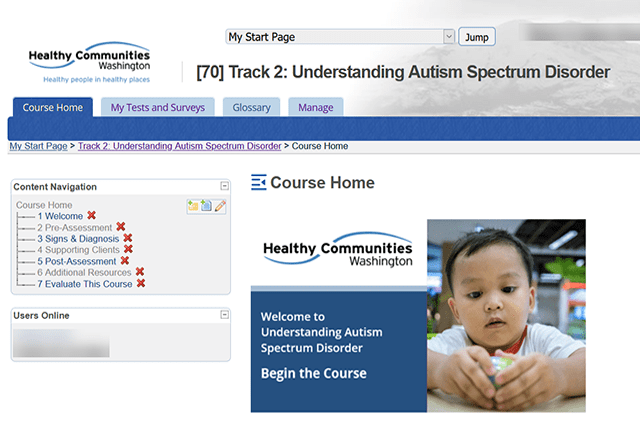A team of educated workers can ease the operating costs of health and community agencies. But what eases the cost of a training program? E-learning could be the answer.
Hiring new employees can be a game-changer for your agency. Well-trained staff can make your project move smoothly and be the key to their success.
But what if those employees aren’t trained? And what if they have outdated skills?
Before you can maximize the benefit of your staff, they need to be trained well.
Calculating the cost can be tricky. Here are some tips that can help you calculate the cost of your training program.
Decide the Training Your Staff Really Needs
You can’t escape some of the costs of training. Your agency might require training in areas like diversity and equity or sexual harassment. Those — everyone needs.
However, not every person needs every course. Be sure you’re delivering the correct training for the job that needs to be done. Cross-training can be helpful, but only if it makes sense for the job.
Match the training program to the specific job skills each person needs. This will set you up for savings and them up for the best chance of success in their job.
Look for Hidden Costs of Training Employees
Hidden costs lurk in traditional live instructor-led trainings, and it’s a challenge to find them. Start to jot down all the random costs of getting people into a room together, and you’ll see how the prices quickly shoot up. A huge portion is travel and lodging costs, which account for as much as 40 cents of every dollar spent, studies show.
The quickest way to reduce travel and lodging costs is to eliminate them and move the classroom online. Any expense that ordinarily goes to feeding and equipping a group of people can be channeled into development and instructing. That can be an up-front saving, but costs certainly plummet the more often you run the training program.
Here’s a simple calculation from the American Society for Training and Development’s T+D magazine that helps analyze the return on investment (ROI).
“The standard ROI equation calculates Return as equal to Benefits divided by the Cost of the System. Easily determined hard savings include reduction in travel and training budgets, instructors, physical facilities, training materials, administrative time, and hours of lost productivity when the employee is off-site,” the magazine reports.
To do it, add up the cost for a specific period of classroom training, including travel and lodging expenses for out-of-town attendees, vendor payments if applicable, administrative overhead, real estate expenses and instructor time. Don’t bother calculating more intangible expenses, such as time off the job, if you don’t want to.
Total those expenses and compare them with the estimated costs associated with an online training application. The difference will probably astound you.
Determine the time involved in training
It’s easy to see how the kinds of things you can buy at your local Staples drain the coffers. One item that’s often neglected from “should we move to e-learning” calculations is the cost of time. Instructor-led training simply takes longer than e-learning.
“My company has found that on-ground courses that move to eLearning take about half the ‘seat time’ in their eLearning format,” Judy Unrein says in her article Overcoming Objections to eLearning in Learning Solutions magazine.
Unrein, who is an instructional designer for Nike and who has an M.Ed. in Instructional Design from the University of Massachusetts in Boston, goes on to say that one cause is that an online course is more streamlined. All of the “nice to know” filler information that instructors share in classrooms has been removed by the time it goes online.
Minimize financial risk
Live training sessions are also critically scheduled, and the margin of error is much narrower. For example, one of our clients, a department of a New York-based college, recently had an in-person event where the instructor didn’t show up. He simply forgot, and there was a room of people clearing their throats, waiting for the star to show. They rescheduled for the following week, duplicating the cost of the training.
Problems can happen online too, but when mistakes of this magnitude happen in person, the financial drain is much higher.
While every program is different, the savings of an e-learning program vs. instructor-led training can be significant. Every program considering moving training online should carefully research the hidden costs of bringing a room of people together.
For more information on increasing the return on your e-learning investment, book a free consultation and we’ll contact you to discuss an e-learning program that fits your needs and budget.



